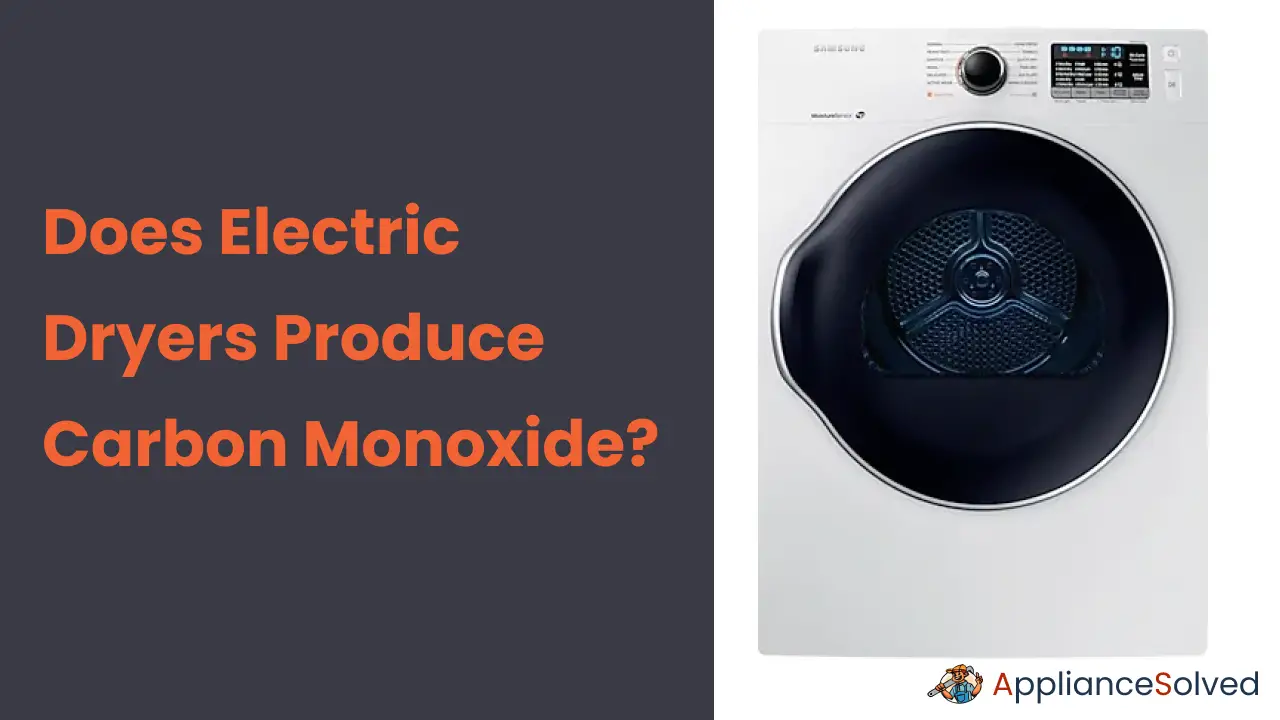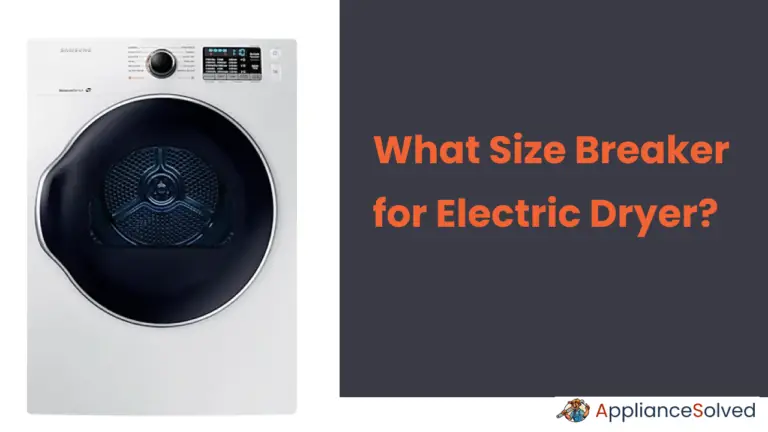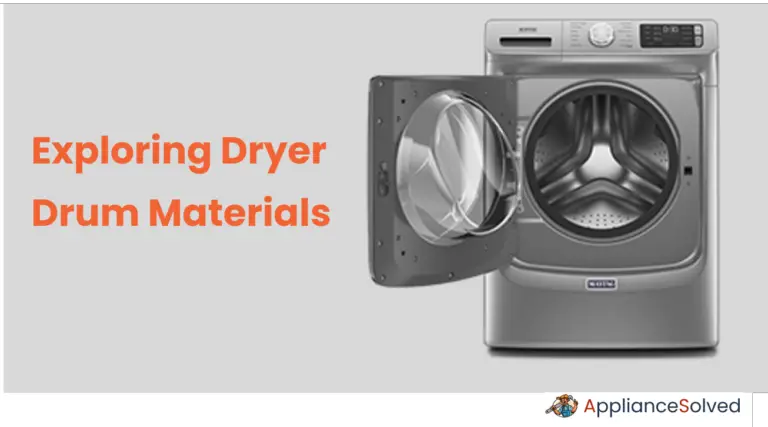Does Electric Dryers Produce Carbon Monoxide?
Electric dryers are a common household appliance used to efficiently dry clothes after washing. However, concerns have arisen about potential carbon monoxide (CO) emissions from electric dryers and their implications on indoor air quality and safety. Does electric dryers produce carbon monoxide? In this article, we will explore the science behind electric dryers, the absence of CO emissions, and the safety measures to ensure a secure drying experience for homeowners.
Do Electric Dryers Produce Carbon Monoxide?
No, electric dryers do not produce carbon monoxide (CO). Unlike gas dryers, which use natural gas combustion to generate heat, electric dryers use electricity to power a heating element. The heating element in electric dryers consists of coiled wires that become hot when an electric current passes through them, producing the necessary heat to dry clothes. Since there is no combustion involved in the drying process, no carbon monoxide is generated. Therefore, electric dryers are considered safe in terms of carbon monoxide emissions.
However, it’s still important to follow safety guidelines, perform regular maintenance, and use carbon monoxide detectors in homes to detect any potential leaks from other sources and ensure a safe living environment.
Understanding Electric Dryers
How do electric dryers operate compared to gas dryers?
Electric dryers utilize electricity as their primary energy source to power the drying process, while gas dryers rely on natural gas combustion. The electric version employs a heating element that generates heat when an electrical current passes through it. This eliminates the need for a gas flame and, consequently, the production of CO. Read Can You Convert Electric Dryer to Gas guide post.
Is there a combustion process involved in electric dryers?
Unlike gas dryers, electric dryers do not involve any combustion process. The heating element warms the air inside the dryer, and the warm air evaporates the moisture from the clothes, resulting in dry laundry without CO emissions.
How is electricity utilized to power the drying process?
Electricity is converted into heat through the heating element, which is typically made of metal coils. As the air circulates inside the drum, the heated air absorbs moisture from the clothes, and the resulting humid air is vented outside the dryer through a dedicated venting system.
Carbon Monoxide and Its Sources


What is Carbon Monoxide (CO)?
Carbon Monoxide (CO) is a colorless, odorless, and tasteless gas that results from incomplete combustion of carbon-based fuels. It poses a significant risk to human health due to its toxic nature.
How is Carbon Monoxide produced?
Carbon Monoxide is produced when carbon-based fuels undergo incomplete combustion, creating CO instead of carbon dioxide (CO2). Common sources include malfunctioning gas appliances and vehicles.
What are the sources of Carbon Monoxide in residential settings?
In residential settings, sources of Carbon Monoxide include gas appliances (furnaces, stoves, water heaters), vehicles idling in enclosed spaces, generators, and fireplaces.
What are the dangers of Carbon Monoxide exposure?
Carbon Monoxide exposure can be life-threatening, interfering with oxygen transport in the body, causing tissue damage, and leading to organ failure.
How does Carbon Monoxide affect human health?
Inhaling Carbon Monoxide can cause various symptoms like headaches, dizziness, nausea, and confusion. Prolonged exposure can result in neurological damage or death. CO binds to hemoglobin in the blood more readily than oxygen, causing a reduction in the oxygen-carrying capacity of red blood cells and potentially leading to carbon monoxide poisoning.
What are the symptoms of Carbon Monoxide poisoning?
Symptoms of Carbon Monoxide poisoning include flu-like signs: headache, nausea, vomiting, dizziness, and confusion. Recognizing these signs is vital for prompt action.
How can you prevent Carbon Monoxide exposure in your home?
To prevent exposure, ensure proper ventilation, regular maintenance of gas appliances, and never use generators or grills indoors. Install Carbon Monoxide detectors for early warning.

Why is it important to have Carbon Monoxide detectors?
Carbon Monoxide detectors offer early warning against potential leaks, providing time to evacuate and avoid serious health consequences.
How does Carbon Monoxide affect the environment?
Carbon Monoxide is a significant air pollutant and greenhouse gas, contributing to smog formation and adversely impacting air quality and the environment.
What are the common safety measures to avoid Carbon Monoxide incidents?
Common safety measures include regular appliance maintenance, proper venting, avoiding indoor use of generators and grills, installing Carbon Monoxide detectors, and seeking immediate medical attention for suspected poisoning.
How to detect carbon monoxide in residential settings?
It is crucial to install carbon monoxide detectors in homes to detect any potential leaks and ensure early warning in case of CO presence.
Why is monitoring and controlling CO emissions crucial for safety?
CO poisoning can lead to severe health issues, ranging from headaches and dizziness to unconsciousness and even death. Monitoring and controlling CO emissions are essential to safeguard occupants and ensure a healthy living environment.
The Absence of Carbon Monoxide Emissions in Electric Dryers
How does the heating element in electric dryers work?
The heating element in electric dryers consists of coiled wires made from materials with high electrical resistance. When an electric current flows through these wires, they become hot, generating the necessary heat for the drying process.
Can electric dryers produce heat without combustion?
Yes, electric dryers can produce heat without any combustion process. Since there is no combustion involved, there are no carbon-based fuel by-products or CO emissions generated during the drying cycle.
What are the by-products associated with carbon monoxide production, and are they present in electric dryers?
Carbon monoxide production is a result of incomplete combustion, which creates other by-products like carbon dioxide (CO2), water vapor, and particulate matter. As electric dryers do not rely on combustion, none of these by-products are produced during their operation.
Is Electric Dryer Exhaust Harmful?
No, Electric dryer exhaust is not inherently harmful in terms of carbon monoxide emissions, as electric dryers do not produce carbon monoxide. However, the exhaust may contain moisture and lint, which can impact indoor air quality if not properly vented outside. Regular maintenance and proper venting are essential to ensure efficient drying, prevent fire hazards, and maintain a healthy living environment.

Understanding Electric Dryer Exhaust
Electric dryer exhaust refers to the air that is vented out of the dryer during the drying process. This exhaust contains moisture, lint, and some trace amounts of air pollutants that were present in the laundry. While this exhaust is not harmful in terms of carbon monoxide emissions, it may still have some potential implications for indoor air quality and human health.
Moisture and Indoor Air Quality
The moisture in electric dryer exhaust can contribute to increased humidity levels in indoor spaces if the dryer is not properly vented outside. High humidity can create a favorable environment for mold and mildew growth, which may lead to health issues, especially for individuals with respiratory conditions or allergies. Proper venting to the outdoors is crucial to maintain optimal indoor air quality and prevent moisture-related problems.
Lint and Fire Hazards
Lint, a common by-product of drying clothes, is present in the electric dryer exhaust. If the lint filter is not regularly cleaned, lint can accumulate in the dryer vent system, causing reduced airflow and potentially leading to overheating. This poses a fire hazard, as excessive lint buildup can ignite and cause a dryer fire. Regularly cleaning the lint filter and ensuring proper venting can help mitigate this risk.
Safety Measures to Minimize Potential Harm
To ensure that electric dryer exhaust does not pose harm to indoor air quality and overall safety, homeowners should take the following measures:
Proper Ventilation
- Ensure the electric dryer is properly installed and vented outside the house.
- Regularly check the vent system for any obstructions or lint buildup and clean it as needed.
Regular Maintenance
Clean the lint filter before or after each use to prevent lint accumulation and maintain proper airflow.
Use Carbon Monoxide Detectors
Although electric dryers do not produce carbon monoxide, having carbon monoxide detectors installed in the home can help monitor air quality and detect any CO leaks from other sources.
Monitor Humidity Levels
Keep an eye on indoor humidity levels, especially in laundry rooms, and use a dehumidifier if needed to maintain optimal humidity levels.
Safety Measures for Electric Dryers
What are the general safety guidelines for operating electric dryers?
To ensure safe operation, users should follow these guidelines:
- Regularly clean the lint filter to prevent lint buildup and potential fire hazards.
- Properly install and vent the dryer to the outside to expel humid air.
- Avoid overloading the dryer to maintain proper air circulation.
Why is proper installation and maintenance important?
Correct installation and regular maintenance are essential to prevent mechanical issues that could lead to safety hazards. Additionally, proper ventilation ensures efficient drying and minimizes the risk of mold growth.
Should homeowners consider using carbon monoxide detectors with electric dryers?
While electric dryers themselves do not produce carbon monoxide, it is still advisable to have carbon monoxide detectors installed throughout the home, especially near bedrooms and common areas. This is crucial in case of any other potential sources of CO in the household.
Addressing Misconceptions and Potential Risks
What are some common myths regarding electric dryers and CO emissions?
- Myth: Electric dryers produce carbon monoxide.
- Myth: Carbon monoxide detectors are unnecessary for electric dryer users.
- Myth: Electric dryers are less energy-efficient than gas dryers.
Are there any risks unrelated to CO production that users should be aware of?
While electric dryers themselves do not emit CO, users should be cautious of other risks, such as:
- Fire hazards from lint buildup and improper venting.
- Potential electrical hazards due to faulty wiring or outlets.
How can consumers be educated about safe practices and maintenance?
Manufacturers and retailers should provide clear and concise safety guidelines in product manuals, and online resources should be available to educate consumers about proper installation, maintenance, and safety measures when using electric dryers.
Conclusion
Does electric dryers produce carbon monoxide? electric dryers do not produce carbon monoxide emissions. They are a safe and efficient option for drying clothes when properly installed and maintained. Understanding the absence of CO emissions in electric dryers and addressing common misconceptions can help homeowners make informed decisions about their household appliances and ensure the well-being of their families. By adhering to safety guidelines and using carbon monoxide detectors, users can confidently use electric dryers while prioritizing safety and indoor air quality.
FAQ about Does electric dryers produce carbon monoxide
Can a dryer produce carbon monoxide?
No, a standard electric dryer does not produce carbon monoxide (CO). Electric dryers use electricity to generate heat through a heating element, eliminating the need for combustion and preventing CO emissions.
Are electric dryer vent fumes harmful?
Electric dryer vent fumes are not harmful in terms of carbon monoxide emissions since electric dryers do not produce CO. However, the exhaust may contain moisture and lint, which can impact indoor air quality if not properly vented outside.
Do you need to vent an electric dryer?
Yes, venting an electric dryer is essential to expel moisture and lint from the drying process. Proper venting ensures efficient drying, prevents potential fire hazards, and maintains optimal indoor air quality.
How do I know if my dryer is leaking carbon monoxide?
Electric dryers do not produce carbon monoxide. However, to detect CO leaks from other sources in your home, install carbon monoxide detectors near bedrooms and common areas as an added safety measure.







